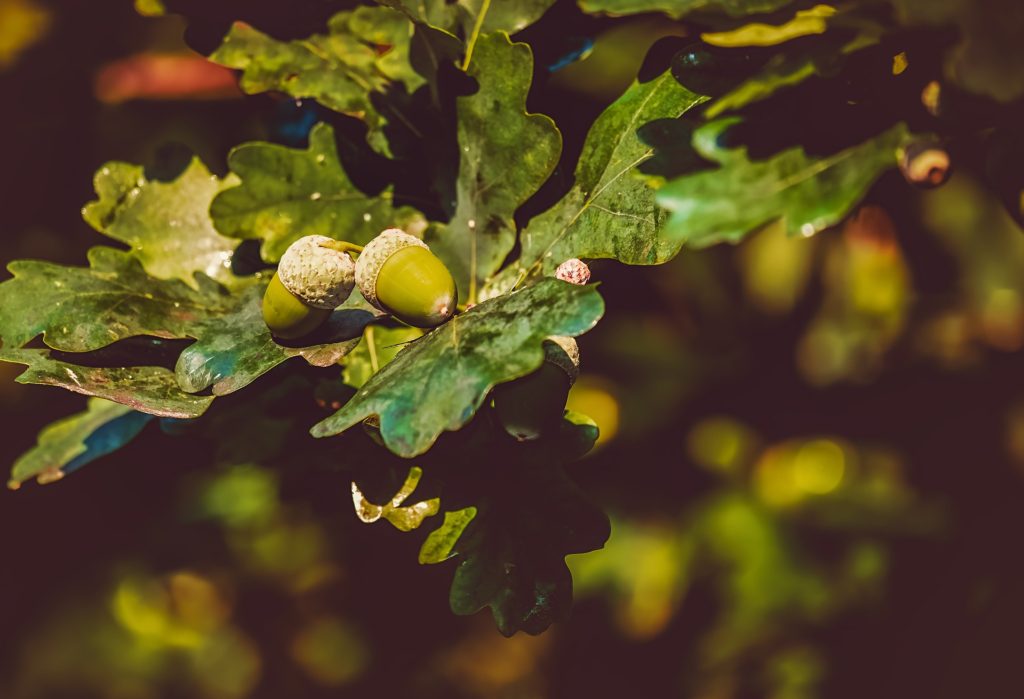The white oak is one of Ontario’s most iconic tree species. With some specimens documented to be over 450 years old, it is an extremely long-lived species found across the province.
Wood from the white oak is waterproof, so for hundreds of years it has been used in making barrels for storing liquids like wine and whiskey, as well as for shipbuilding historically. All oaks have hard, durable, and elastic wood, and white oak specifically is valued as one of our most important commercial hardwoods.
Because white oak can live for so long, Southern Ontario has plenty of examples of trees that are hundreds of years old and marked as Heritage Trees by Tree Canada. In Toronto and Port Hope, for example, are white oak trees over 200 years old. View more Heritage Trees in Ontario here.
How to Identify a White Oak Tree
White oaks can grow up to 35 metres tall and have trunks 1.2 metres in diameter. It is unique in that sometimes, it can be free from branches for two thirds of its total height.
White oak can be most easily identified by its leaves. It has bright green leaves in the spring and summer with 7 to 9 deep, rounded lobes on each leaf. The leaves can range in size from 10 to 20 centimetres long. White oak leaves can be distinguished from other oak species easily: red oak leaves are sharply toothed and bur oak lobes are not as deep.
Bark on a white oak is whitish to pale grey when it matures and is flaky or scaly. Often, its scales will be much longer than other tree species.
Also easily identifiable on a white oak are its acorns. These acorns grow up to 2.5 centimetres long and drop off the tree in the fall when they are ripe.
Is the White Oak Native to Ontario?
White oak is native to many parts of North America, including Ontario, Quebec, and the eastern part of the United States all the way down to parts of northern Florida.
Because white oak is a native tree species in Ontario, it is often a recommendation for landscaping and reforesting our urban areas where there is ample space for this species to grow.
Caring for a White Oak Tree in Ontario
Caring for a white oak tree is often very easy because it is an adaptable, flexible tree that can handle a variety of conditions.
It prefers full sun and will grow best when given ample sunlight. White oaks tolerate multiple moisture levels in soil and a variety of soil types, making it a great option across different types of landscapes.
A special consideration that should be given when planting a white oak is that they have a deep root system. Therefore, they should not be planted close to drainage tiles or septic tanks as they may cause damage in the long term.
The acorns from the white oak can also make a mess if near a driveway or parked cars. It’s best to keep white oaks away from sidewalks or areas with parked vehicles.
Threats to White Oak Trees
White oak trees are susceptible to Lymantria dispar dispar (LDD), also known as the gypsy moth. LDD is an invasive species from Europe and Asia and when in caterpillar form, feed on new leaves, often defoliating entire trees in only a few weeks’ time. A healthy tree that experiences one year of defoliation from LDD caterpillars can often recover the next year, but will be weakened, leaving it susceptible to other diseases or infestations. If a white oak is repeatedly defoliated year after year by LDD outbreaks, the tree may die.
Common diseases affecting white oak trees also include anthracnose, causing irregular spots and browning of the leaves, leaf spot, leaf scorch, and canker. Oak wilt also affects white oak species, blocking the flow of water and food from the roots to the leaves and crown and potentially killing the tree. White oak is slightly more resistant to oak wilt than other oak species, but it is still at risk. There are injections available to protect white oak trees from oak wilt or even help them recover from an existing fungal infection.
If you have concerns about a white oak on your property, the certified arborist at P & A can help. We work with clients across Southern and Central Ontario to ensure their trees are protected through construction projects and treated for various diseases or infestations.
Contact us today if you are looking for an arborist report or treatment options for your white oak.
